Rebel with a Canvas
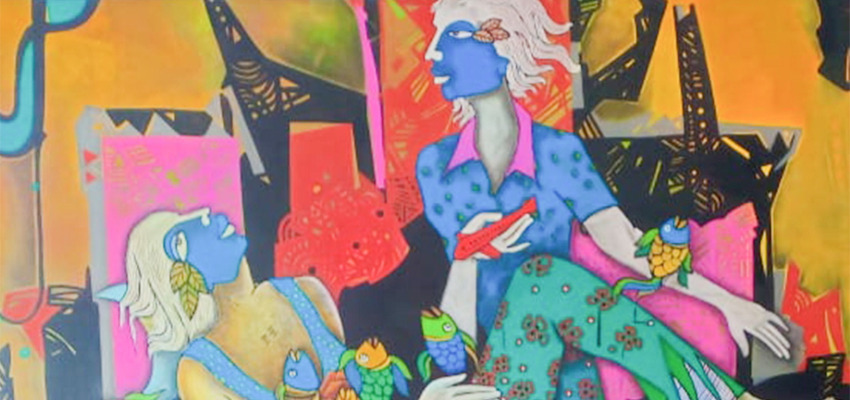
For many people art is all about a canvas full of colours. However, for Vinay Amber, a painter, writer, sculptor, theatre artist and cultural activist, it has always been about showcasing social issues and exploring truth of life. Once a photojournalist who was unafraid to expose corruption, today he is an artist who paints the emotions of people on canvas, Vinay has always turned to art as a way to question the hollow norms of society
" For me, art is not decoration. Art is politics, it is survival, it is resistance "
— Vinay Amber
When art chooses you, there is no going back, believes Vinay Amber, who was always inclined towards painting. Having roots in Gwalior, he grew up watching his father paint. However, his talent truly got nurtured when he moved to Jabalpur, Madhya Pradesh. “I was an average child in my teenage years who was poor in studies and had a bad company. My father, who was a painter himself, told me to work, earn and complete my education on my own, as he denied to fund my studies further. It was a tough time, but also the beginning of something new,” he recalls.
A book that changed life
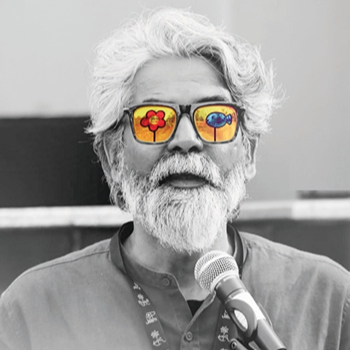
After fairing poor in higher secondary exams, Vinay’s father asked him to leave the house and find a job to fund his further education. He left without any argument. While wandering in the city in wee hours, Vinay was figuring out his life ahead when he stumbled upon a book Dharmyuga, which changed everything for him. On its cover, the author was holding cameras on both sides. That picture struck him deeply and he decided to pursue photography.
“Initially, penniless, I requested my mother to help me with a small amount. I bought a bolt of fabric to resell and made enough money to buy a new Nikon FG camera,” he recalls. “I had no clue how to use it. Fortunately, a studio owner living nearby allowed me to sit in his studio and learn about photo films and dark room. From there, my journey with photography began.”
It was then that he shot his first picture, featuring his grandmother holding a hookah in her hand. “My first click was published in a national daily. I was full of joy with the responses and praise I received from the readers. That gave me confidence, and I started working as a full-time photographer for a newspaper,” he says.
"Art cannot be neutral. Every painting, sculpture or poster, decides what stories are told and what voices are remembered"
Truth through the lens
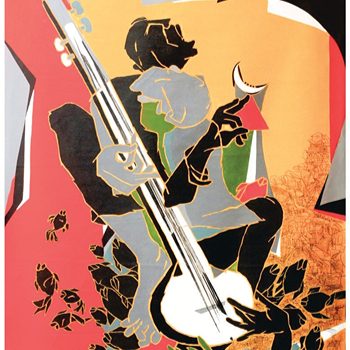
In 1984, Vinay grew as a photojournalist, covering Indira Gandhi assassination case and the nationwide major events and protests that followed. “It was not easy. Once, during a protest, people snatched my camera, they threatened to kill me because I was not afraid of showing the truth and exposing corrupt people,” he expresses. These constant risks on the field pushed him to leave photojournalism and turn back to his first love—painting.
Switching back to painting
After completing his degree in fine arts, Vinay was drawn back to painting. “At first, I painted on newspapers. For me, it was a way of saying that art and current events are connected,” he recalls. He left journalism and began his career as a full time artist. “I started painting on contemporary social issues. My friends encouraged me to send my work abroad, and to my surprise, it was accepted in exhibitions in France and Italy. This show went exceptionally well,” he says.
After the exhibitions abroad there was no looking back for Vinay. Alongside painting about women empowerment and culture, reading books inspired him to bring social issues onto the canvas differently. “I was also inspired by the words of Somnath Hore, a renowned painter and printmaker, who once said that anyone who wants to be a painter, writer, poet or theatre artist, should become a Marxist for a time being. He meant that art is not separate from society,” he informs. “I read Somnath Hore a lot and that shaped my perspective as an artist. I began to see art as a tool to speak about social issues, pain and struggle,” he says.
Over time, Vinay made more than 10,000 posters combining poetry of national and international poets into his painting. These posters were also exhibited in various events. “I believe poetry has the power to touch people in ways basic facts cannot. Poetry and art became my way of raising awareness,” he adds. While his paintings have been exhibited in various national and international art galleries, he has also conducted various solo exhibitions to raise social awareness.
The JALAM festival
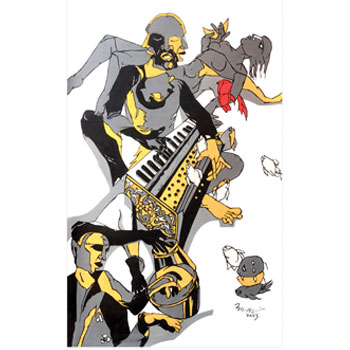
Over last 30 years, Vinay is actively painting to raise awareness, by showcasing social struggle and history. “I wanted to make my own statement, not just copy others. This is why I believe art cannot be neutral. Every painting, sculpture or poster, decides what stories are told and what voices are remembered,” he said. Introducing Jabalpur Art, Literature and Music Festival (JALAM) to the city of Jabalpur was a milestone for Vinay on making art a tool for the change. For last ten years, he has been conducting this annual national level art festival under the banner of Ityadi Art Foundation—an organisation he established in 1995. Every year at JALAM, he brings together hundreds of artists including painters, writers, musicians and sculptors, from across the country. “At JALAM, it is not only about performances or exhibitions; it is about discussions. We talk about questions like: How do we look at art? What role does an artist play in politics? How has Indian art changed with time? These conversations are now reaching academic spaces as well,” he says proudly.
"Don’t paint just to earn money, paint to grow as an artist. Read history, philosophy and literature, because art is connected with everything"
Recognition and today
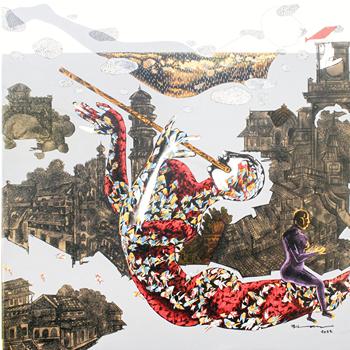
For Vinay, recognition did not come easily. He failed in arts college multiple times, often for political reasons. His family questioned his choices. Survival was tough for him. But, he never left art, rather art never left him. “One moment I remember is from a recent show at Jehangir Art Gallery in Mumbai. The critics, the workers and even framers praised my work. That meant a lot to me. The glint in their eyes showed that authentic art connects with everyone,” he articulates.
Looking back, as Vinay says, art gave him purpose in life. “It taught me patience,” he says with a smile. “My advice to young artists is simple: read more, work more. Don’t paint just to earn money, paint to grow as an artist. Read history, philosophy and literature, because art is connected with everything. For me, art is not decoration. Art is politics, it is survival, it is resistance. And, that is why I will keep painting, no matter what,” he signs off.